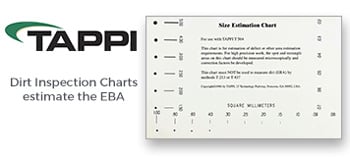|
UPM-Kymmene keeps things moving with on-line moisture measurement
On-line moisture detection can be a powerful weapon in the battle
for better machine maintenance.
 Oil’s
biggest enemy is water—but to fight an enemy, you have to find it.
At UPM-Kymmene’s Tervasaari mill, Vaisala HMP228 transmitters measure
the water content of the lubrication system. Since the first HMP228 was
installed in March 1997, maintenance quality at the mill has significantly
improved. Oil’s
biggest enemy is water—but to fight an enemy, you have to find it.
At UPM-Kymmene’s Tervasaari mill, Vaisala HMP228 transmitters measure
the water content of the lubrication system. Since the first HMP228 was
installed in March 1997, maintenance quality at the mill has significantly
improved.
“The amount of water in the lubrication system is one of the main
concerns in preventive maintenance,” explained Heikki Kataja, who
has responsibility for preventive maintenance of the mill’s paper
machine. Although there is always some water in the system, our challenge
is to keep the water content at an acceptable level.”
Water in the lubrication system can cause a host of problems for a paper
machine. It leads to corrosion, absorbs or consumes additives in the oil,
and reduces bearing life and the service life of the entire machine. The
microprocessor-based HMP228 continuously measures moisture in oil reliably
and accurately, according to Vaisala. It also allows mills to monitor
the functioning of a separator or a purifier. Features of the transmitter
include:
- Humicap® sensor
- Full measurement range of water activity
- Long-term stability
- Easy to install, calibrate, and maintain in the field
- NIST traceable (certificate included)
The HMP228 can be supplied with a cover that has a local display/keypad.
The display shows the measurement readings and also functions as a user
interface. A display/keypad transmitter is easy to use and configure with
the menu-based commands of the built-in software.
For mills that want the ability to insert and remove the moisture probe
for calibration without the need to empty the oil system, the HMP228 is
also available with a ball valve set. An optional alarm relay is also
available.
Providing results
The Vaisala HMP228 employs a unique measurement concept that has proven
quite effective for the Tervasaari mill. Traditionally, mills measure
water in oil by parts per million (ppm), as per Karl Fischer’s titration.
While this method is considered reliable, the type of oil and aging must
be taken into careful account. For instance, 200 ppm in one oil can indicate
saturation; with another type of oil, the same 200 ppm measurement may
indicate a level that is far from saturation.
Instead of using ppm, Vaisala’s concept measures water in oil
in terms of water activity (aw). The sensor uses a scale that progresses
from a lowest level of 0 aw (indicating that the oil is completely water
free) to 1 aw, indicating that the oil is fully saturated.
The biggest benefit of Vaisala’s system is that the aw value more
clearly indicates whether the oil is too moist; mill technicians don’t
need to use separate tables for different oil types, and do not require
estimates about the oil’s temperature, age, or previous use conditions.
“We are very pleased with the benefits offered by the HMP228 transmitter
and Vaisala’s concept,” said Kataja. “The instrument
is easy to calibrate against salt solutions, and no reference oils are
needed.”
In February of 1998, the Tervasaari machine’s bearing sealings
caused a leak in the system when the machine was being washed. “Normal”
aw values for the machine fell between 0.3 and 0.5; when the leak occurred,
the aw value jumped to approximately 0.9. “The HMP228 provided an
immediate alarm that something had happened,” explained Kataja.
“The oil had become saturated with water, and it took some time
before the situation was returned to normal. The point is that we were
able to start troubleshooting immediately.” S!
For more information about the HMP228 transmitter, contact Elizabeth
Mann, Vaisala Inc., by telephone at 1 781 933-4500, or visit www.vaisala.com
|





